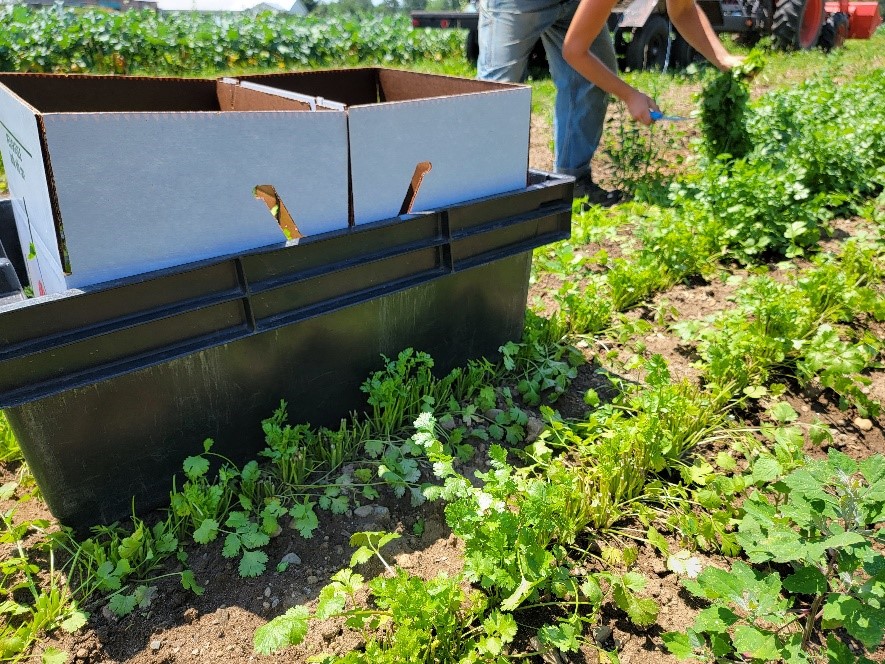
By Kim Burns & Ollie Cultrara - Vermont Agency of Agriculture, Food & Markets
Farmers are creative about choosing methods and infrastructure that fit their unique operations. In this series, the Produce Program at the Vermont Agency of Agriculture, Food & Markets features tools and practices that Vermont fruit and vegetable growers use to enhance food safety, increase efficiency, protect product quality, and improve employee satisfaction. This month we’re featuring West Farm, a 10-acre organic vegetable and herb farm in Jeffersonville.
Hands-Free Hand Wash Sink
West Farm bought a hands-free sink in 2021 to replace their previous makeshift handwashing stations. The hands-free design allows the crew to turn on the water by pushing on the pedal in the front of the sink with a knee or leg. It is hooked up to an on-demand water heater for warmer water in the colder seasons.
Why It Works
The farm chose a hands-free sink for two reasons. First, during the production season, the new sink allows employees to wash their hands without spreading dirt or other materials to the surfaces of the sink that other people must touch. This way, the sink stays cleaner and is easier to maintain. Secondly, the hands-free setup makes handwashing between tasks quick and effective. The sink is in a central location inside the wash and pack barn that makes it more accessible. Crew can easily wash their hands before heading out to harvest, before packing produce inside, after returning from a break, and in-between other tasks.
Note: the sink isn’t plumbed to a drain, so the farm uses a bucket to collect used handwashing water. This keeps that water off the floor and away from foot and equipment traffic that could otherwise track through the water and spread potential contaminants.
Field-Packing Setup
West Farm recently implemented a new field packing practice where they field pack into waxed cardboard boxes that are placed inside of large plastic totes. The key difference between the setup and the previous one is the usage of the large plastic totes, colloquially known as fish totes. The fish totes are made of durable plastic and when the waxed cardboard boxes are placed inside, they can be dragged between rows while the harvester field-packs. The totes are easy to clean with a daily rinse and an occasional thorough scrub.
Why It Works
The fish totes provide a barrier between the ground and the bottom of the wax boxes during harvest. Even in areas that aren’t “dirty,” the totes prevent any unnoticed contamination, such as deer droppings, from contacting the cases or produce. This is especially important for field packing greens that are iced and palletized in the field. Any debris stuck to the bottom of a box could otherwise potentially cross-contaminate multiple cases as the ice melts. Another benefit is that clean boxes improve the quality of presentation to customers. While it is a little less efficient for packing out larger cases (e.g., kale), the farm finds the trade-off worthwhile.
For more information about on-farm food safety and resources for fruit and vegetable growers, visit agriculture.vermont.gov/produceprogram.

